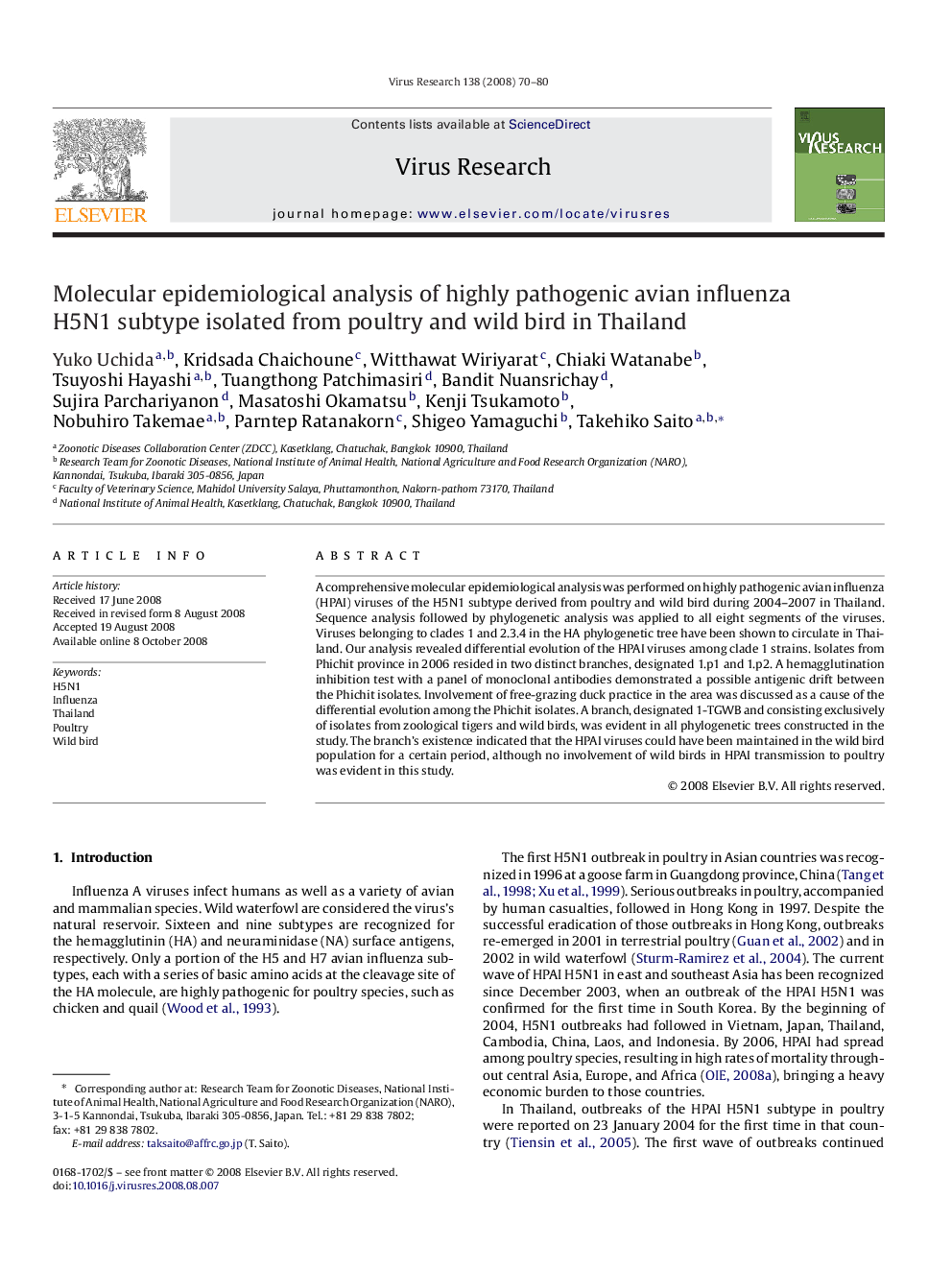| Article ID | Journal | Published Year | Pages | File Type |
|---|---|---|---|---|
| 3430398 | Virus Research | 2008 | 11 Pages |
A comprehensive molecular epidemiological analysis was performed on highly pathogenic avian influenza (HPAI) viruses of the H5N1 subtype derived from poultry and wild bird during 2004–2007 in Thailand. Sequence analysis followed by phylogenetic analysis was applied to all eight segments of the viruses. Viruses belonging to clades 1 and 2.3.4 in the HA phylogenetic tree have been shown to circulate in Thailand. Our analysis revealed differential evolution of the HPAI viruses among clade 1 strains. Isolates from Phichit province in 2006 resided in two distinct branches, designated 1.p1 and 1.p2. A hemagglutination inhibition test with a panel of monoclonal antibodies demonstrated a possible antigenic drift between the Phichit isolates. Involvement of free-grazing duck practice in the area was discussed as a cause of the differential evolution among the Phichit isolates. A branch, designated 1-TGWB and consisting exclusively of isolates from zoological tigers and wild birds, was evident in all phylogenetic trees constructed in the study. The branch’s existence indicated that the HPAI viruses could have been maintained in the wild bird population for a certain period, although no involvement of wild birds in HPAI transmission to poultry was evident in this study.
